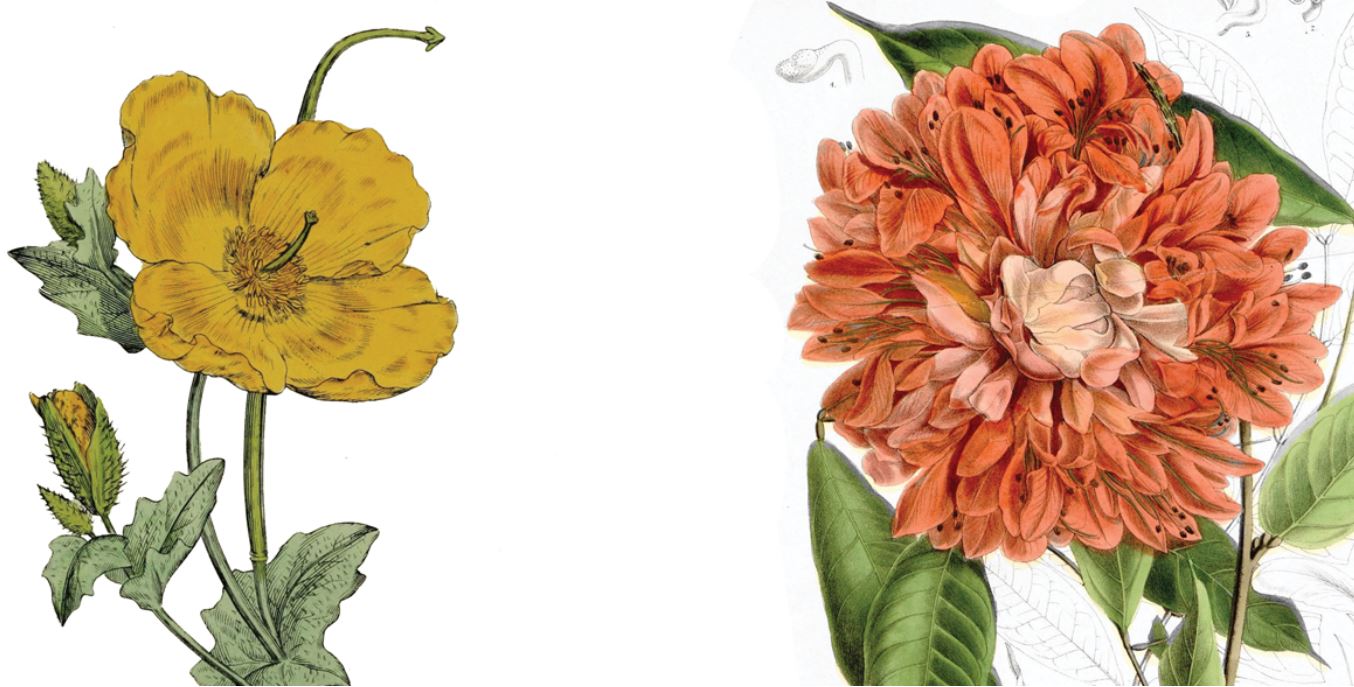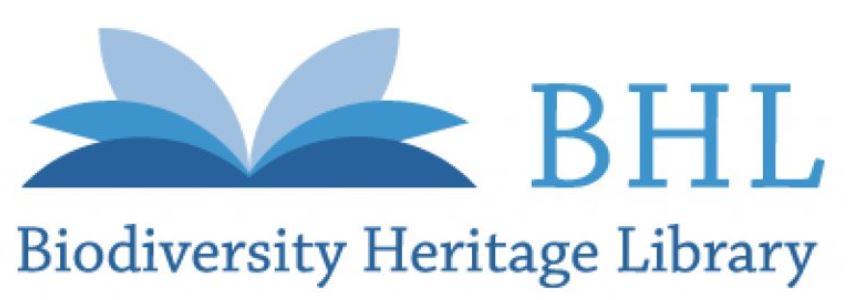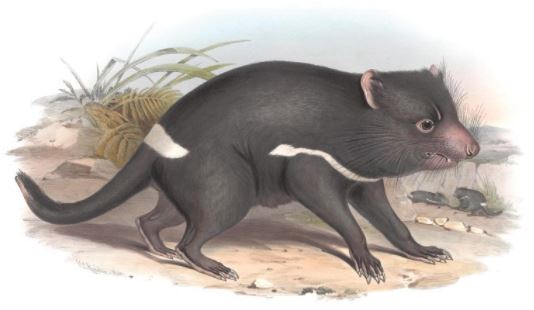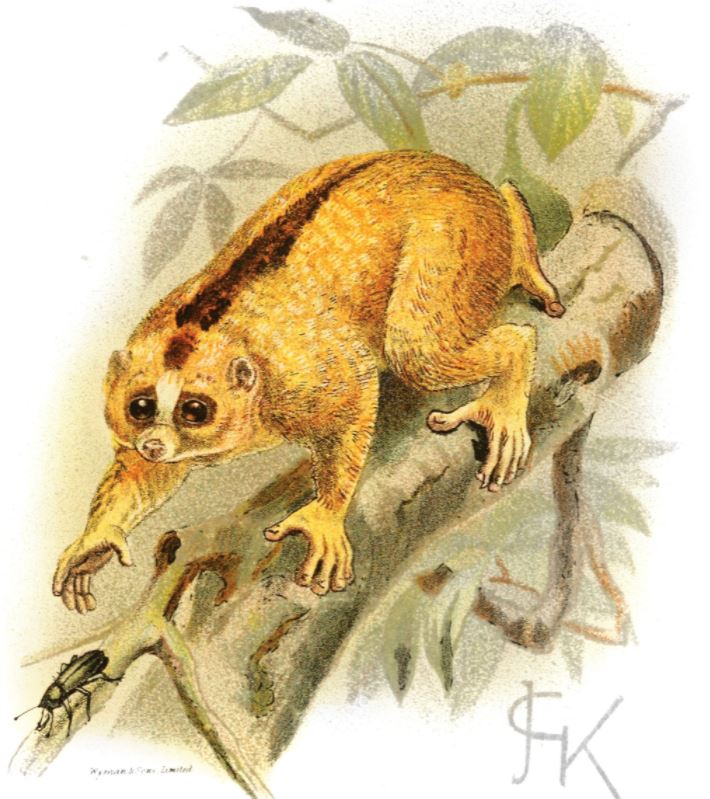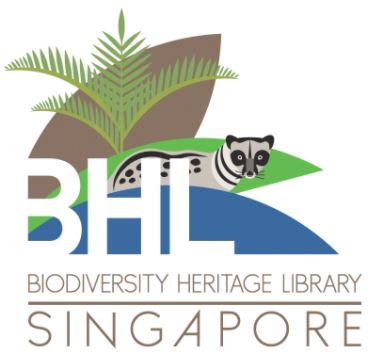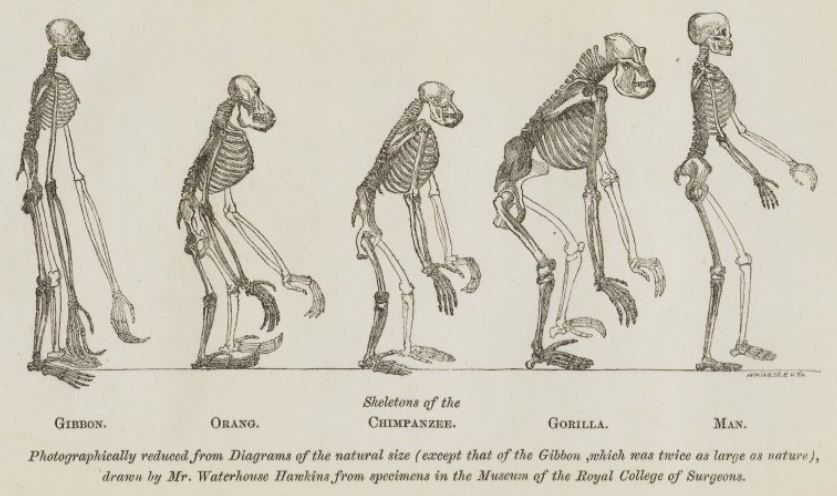A Slice of Singapore in the Biodiversity Heritage Library
With climate change on the rise, access to research on biodiversity and natural history is all the more important. Lim Tin Seng tells us about the Biodiversity Heritage Library.
(Right) The Rose of Venezuela reproduced from Dalton, H. (1880). Curtis’s Botanical Magazine (Vol. 106). London: L. Reeve and Co.
The Biodiversity Heritage Library (BHL) is the world’s largest open access digital library for biodiversity resources. It was created in 2006 when a group of leading natural history and botanical libraries came together to make their digitised collections available in a single online repository at https://www.biodiversitylibrary.org/).
The collections of the United States-based BLH are drawn from an international consortium of more than 120 natural history, botanical, research and national libraries, including renowned institutions such as the Smithsonian Libraries in Washington D.C., the American Museum of Natural History in New York, the Natural History Museum in London and the Royal Botanic Gardens in Kew, London.
The BHL provides free access to the world’s collective knowledge on biodiversity and natural history, and has attracted more than nine million users worldwide since its inception. Such unhindered access to existing as well as new, ground-breaking research relating to the environment and ecosystem is all the more important given the quickening pace of global warming and climate change, and its catastrophic impact on future generations.
Access to Biodiversity Materials
The BHL portal, which was initially launched with just over 300 titles, has seen an impressive increase in its collection size over the last 13 years. Today, users can access over 57 million pages of biodiversity resources, comprising more than 150,000 titles and nearly 248,000 volumes, some of which date back to the 15th century. To ensure that the collection can be accessed freely, BHL has worked with the respective rights holders to make copyrighted materials openly available under Creative Commons licences.
To facilitate ease of retrieval and access, and also to encourage the use of its collections and data, the BHL has partnered with the international taxonomic community, publishers, bioinformaticians and information technology professionals to incorporate various useful tools and services on the portal.
For instance, every title in the BHL repository can be downloaded in a variety of formats, including PDF. As the scientific names of all key animals and plants that appear in BHL books have been indexed, users can also conduct comprehensive taxonomic name searches. To date, the BHL has indexed more than 191 million taxonomic names in its collections. To further aid research, these taxonomic names as well as all the bibliographic records of the books can be exported, and are compatible with existing software systems.
Thematic Collections
Some of the collections in the BHL are categorised into themes to help users navigate the breadth of biodiversity topics the portal contains and, in the process, discover interesting resources. Here is a preview of some of the unique collections on the BHL portal:
-
The “Charles Darwin’s Library” is one of BHL’s key thematic collections. It comprises over 1,480 books owned by Charles Darwin, 430 of which have been digitised and uploaded onto the portal. Many of the titles contain Darwin’s own handwritten annotations and markings. These notes are invaluable for the clues and insights they shed on the development of Darwin’s ideas on evolution and natural selection.Lest researchers struggle to make out Darwin’s notes, BHL has provided full transcriptions of his annotations and markings.
-
Another thematic collection that BHL has put together are works created by women who have made significant contributions to the study of natural history and science. “Women in Natural History” and “Early Women in Science” comprise 1,121 volumes from some 500 titles at the time of writing, and are testament to the achievements of women in the areas of botany, zoology and biodiversity.
- Titles in the paleontology collection were selected from the Vertebrate Palaeontology Library in the Smithsonian Libraries. This 506-volume collection contains close to 380 book and journal titles on physical geography, stratigraphy, systematic paleontology and paleozoology.
- The “Monsters are Real” collection features the fascinating stories, people and animals that have inspired mythical beasts and creatures such as the sea serpent, kraken, hydra, mermaid and the leviathan. This small but unique collection – with just 34 volumes from 31 titles – reveals that history’s most fearsome legendary monsters are actually based on real-life animals.
- Other notable BHL collections include “Rarest of the Rare”, which contains some of the rarest natural history works; “Antarctic Exploration & Discovery”, which comprises rare books, journals and field diaries relating to the exploration and biodiversity of the Antarctica; and the comprehensive “A History of Cats: 1858–1922” from the Library of Congress.
Singapore and the Biodiversity Heritage Library
As the National Library Board (NLB) shares BHL’s vision in providing open access to biodiversity heritage materials, it became a member of the BHL consortium in 2014. As a country node, NLB works with other institutions in Singapore, including the Library of Botany and Horticulture of the Singapore Botanic Gardens (SBG), to select the rarest and the most interesting biodiversity literature for digitisation and inclusion in the BHL portal. NLB has also taken the lead in Singapore by providing expertise for the conservation and digitisation of materials as well as the cataloguing and uploading of digitised works.
Since joining the BHL, NLB has uploaded some 394 volumes of biodiversity and natural history works. These were selected from the National Library Singapore’s Rare Materials Collection as well as from SBG’s Library of Botany and Horticulture.
Singapore’s publications in the BHL are collectively known as “BHL Singapore”. The collection is broadly categorised into the following areas: 1) Institutional History, 2) Natural History of Singapore and the Region, 3) Geography and the Environment of Singapore, and 4) Ethnography and Travel Narratives.
NATURAL HISTORY OF SINGAPORE AND THE REGION
These titles showcase the flora and fauna of Singapore and Southeast Asia. Compiled by natural historians and naturalists from the colonial period – men such as Thomas Horsfield, James Motley and Arthur Gardiner Butler – many of the books contain beautiful illustrations of animals, insects and plants that are indigenous to the region.
Key examples include the three-volume Gleanings of Natural History (1758–64),1 which is the most downloaded book from BHL Singapore; Zoological Researches in Java and the Neighbouring Islands (1824);2 Contributions to the Natural History of Labuan, and the Adjacent Coasts of Borneo (1855);3 The Birds of Singapore Island (1927);4 and The Butterflies of Malacca (1879).5
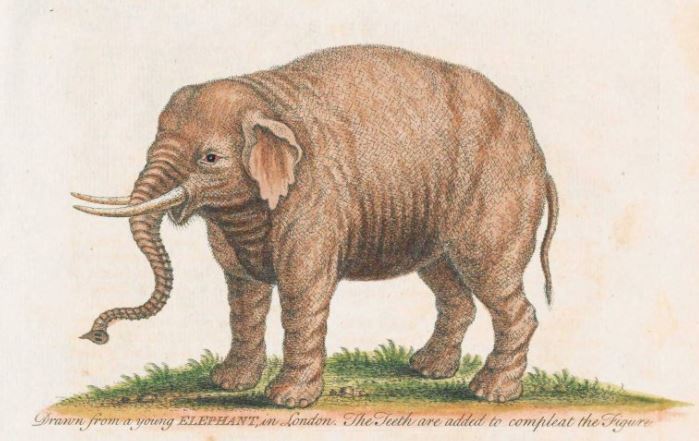
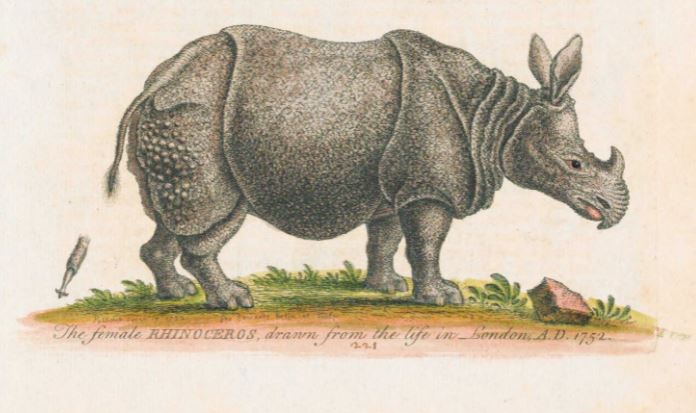
GEOGRAPHY AND THE ENVIRONMENT OF SINGAPORE
Included in this category are books on geology and environmental studies of Singapore. Interesting titles include the Annual Report of the Meteorological Observations in the Straits Settlements for the Year 1890 (1891)6 and A Geography of the Malay Peninsula and Surrounding Countries (1884),7 from which we can piece together the historical weather patterns and geography of Singapore and the region in the 19th century.
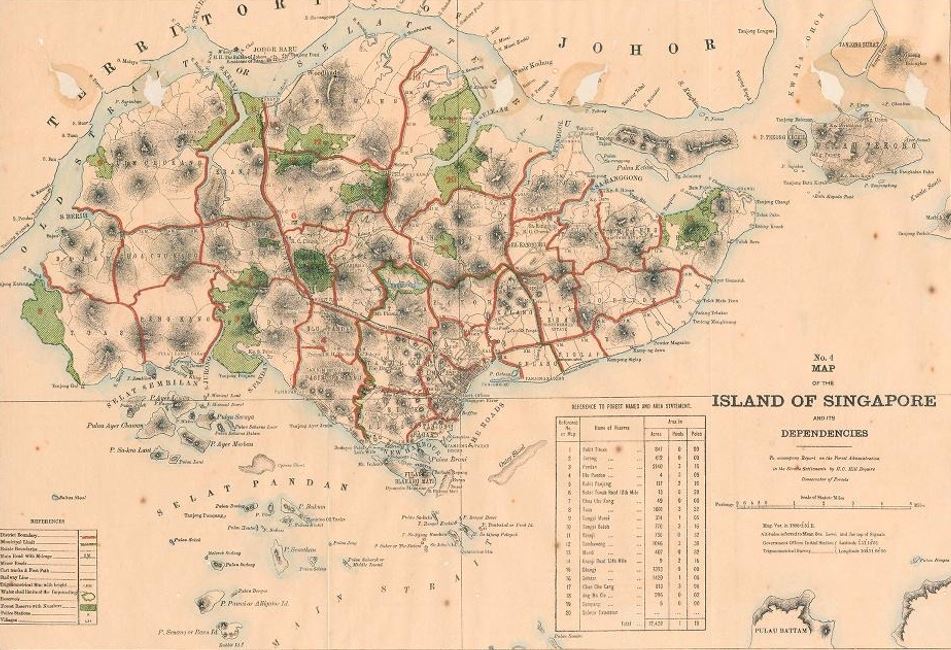
ETHNOGRAPHY AND TRAVEL NARRATIVES
Books in this last category focus on the different ethnicities and cultures in Singapore and the region in the 19th century. Written by naturalists, colonial administrators and travellers, these books were compiled using scientific methodology or personal observations. One key title is The Aboriginal Tribes (1910)8 by the British colonial administrator Richard James Wilkinson. Produced as part of a series of papers on various Malayan topics, the publication – which describes the indigenous tribes living in different parts of the Malay Peninsula – was used as a government instruction manual to help British cadets pass the entrance exam to the Malayan Civil Service.
Another significant title is Travels in the East Indian Archipelago (1868)9 by the American naturalist Albert Smith Bickmore. This voluminous 555-page book documents Bickmore’s expedition to the Dutch East Indies (present-day Indonesia) between April 1865 and May 1866. It records the flora and fauna of the places he visited as well as the ethnological characteristics of the different tribes he encountered.
 Lim Tin Seng is a Librarian with the National Library, Singapore. He is the co-editor of Roots: Tracing Family Histories – A Resource Guide (2013); Harmony and Development: ASEAN-China Relations (2009) and China’s New Social Policy: Initiatives for a Harmonious Society (2010). He is also a regular contributor to BiblioAsia.
Lim Tin Seng is a Librarian with the National Library, Singapore. He is the co-editor of Roots: Tracing Family Histories – A Resource Guide (2013); Harmony and Development: ASEAN-China Relations (2009) and China’s New Social Policy: Initiatives for a Harmonious Society (2010). He is also a regular contributor to BiblioAsia.
NOTES
from BookSG.
-
Edwards, G. (1758). Gleanings of natural history, exhibiting figures of quadrupeds, birds, insects, plants, &c (Part I). London: The Royal College of Physicians. Retrieved from BookSG; Edwards, G. (1760). Gleanings of natural history, exhibiting figures of quadrupeds, birds, fishes, insects, &c (Part II). The Royal College of Physicians. Retrieved from BookSG; Edwards, G. (1764). Gleanings of natural history, containing figures of quadrupeds, birds, insects, plants, &c (Part III). London: The Royal College of Physicians. Retrieved from BookSG. ↩
-
Horsfield, T. (1824). Zoological researches in Java, and the neighbouring islands. London: Kingsbury & Allen. Retrieved from BookSG. ↩
-
Motley, J. (1855). Contributions to the natural history of Labuan, and the adjacent coasts of Borneo. London: John van Voorst. Retrieved from BookSG. ↩
-
Bucknill, J.A.S. (1927). The birds of Singapore island. Singapore: Government Printing Office. Retrieved from BookSG. ↩
-
Butler, A.G. (1879). The butterflies of Malacca. London: The Society. Retrieved from BookSG. ↩
-
Annual report of the meteorological observations in the Straits Settlements for the year 1890. (1891). Singapore: Government Printing Office. This publication is found in the collection of the Singapore Botanic Gardens. ↩
-
Skinner, A.M. (1884). A geography of the Malay Peninsula and surrounding countries in three parts. Part 1. Malay Peninsula, Borneo. Singapore: [s.n.]. Retrieved from BookSG. ↩
-
Wilkinson, R.J. (1910). The aboriginal tribes. Kuala Lumpur: F.M.S. Government Press. Retrieved from BookSG. ↩
-
Bickmore, A.S. (1868). Travels in the East Indian Archipelago. London: J. Murray. Retrieved from BookSG. ↩


